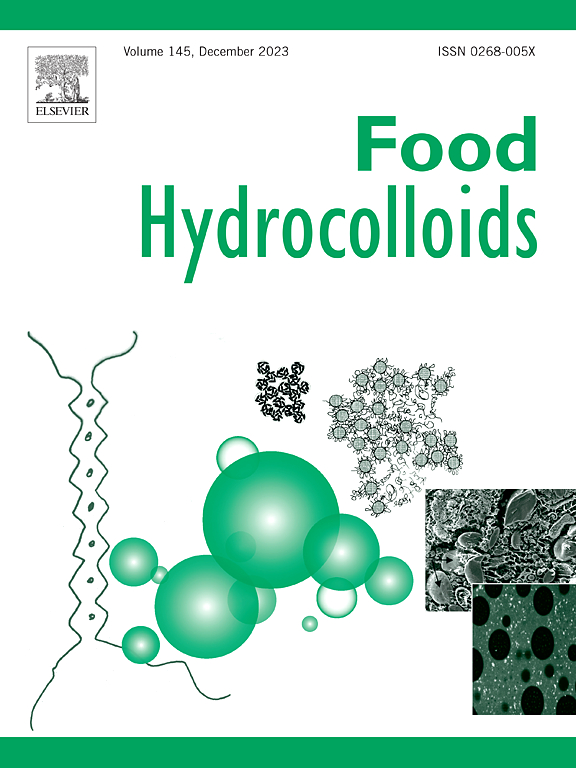Efficient and source-independent preparation of amyloid fibrils from almond protein isolates and concentrates
IF 11
1区 农林科学
Q1 CHEMISTRY, APPLIED
引用次数: 0
Abstract
Amyloid fibrils generated from food proteins have been shown to be promising building blocks for designing functional materials and future foods. The formation of food amyloid fibrils usually requires the use of protein isolates, which largely hinders their practical application due to the high cost and environmental impacts for protein purification. In this study, we found that both almond protein concentrate (APC) and isolate (API) can be efficiently converted into amyloid fibrils by heating under acidic conditions. Atomic force microscopy (AFM), ThT fluorescence, ultracentrifugation measurements indicated that APC and API fibrils have comparable mesoscopic structures and conversion rate, analogous to whey protein isolate fibrils (the model system with excellent fibrillization property). The high fibrillization capacity of APC was demonstrated to benefit from its coexistence with sucrose. In fact, sucrose only slightly affected almond protein fibrillization even at high content of sucrose (60%). More importantly, the efficient fibrillization remained for APCs obtained from different sources, and can be scaled-up. Therefore, this study confirms for the first time the amyloidogenic property of almond proteins and paves the way for their practical utilization.

求助全文
约1分钟内获得全文
求助全文
来源期刊

Food Hydrocolloids
工程技术-食品科技
CiteScore
19.90
自引率
14.00%
发文量
871
审稿时长
37 days
期刊介绍:
Food Hydrocolloids publishes original and innovative research focused on the characterization, functional properties, and applications of hydrocolloid materials used in food products. These hydrocolloids, defined as polysaccharides and proteins of commercial importance, are added to control aspects such as texture, stability, rheology, and sensory properties. The research's primary emphasis should be on the hydrocolloids themselves, with thorough descriptions of their source, nature, and physicochemical characteristics. Manuscripts are expected to clearly outline specific aims and objectives, include a fundamental discussion of research findings at the molecular level, and address the significance of the results. Studies on hydrocolloids in complex formulations should concentrate on their overall properties and mechanisms of action, while simple formulation development studies may not be considered for publication.
The main areas of interest are:
-Chemical and physicochemical characterisation
Thermal properties including glass transitions and conformational changes-
Rheological properties including viscosity, viscoelastic properties and gelation behaviour-
The influence on organoleptic properties-
Interfacial properties including stabilisation of dispersions, emulsions and foams-
Film forming properties with application to edible films and active packaging-
Encapsulation and controlled release of active compounds-
The influence on health including their role as dietary fibre-
Manipulation of hydrocolloid structure and functionality through chemical, biochemical and physical processes-
New hydrocolloids and hydrocolloid sources of commercial potential.
The Journal also publishes Review articles that provide an overview of the latest developments in topics of specific interest to researchers in this field of activity.
 求助内容:
求助内容: 应助结果提醒方式:
应助结果提醒方式:


